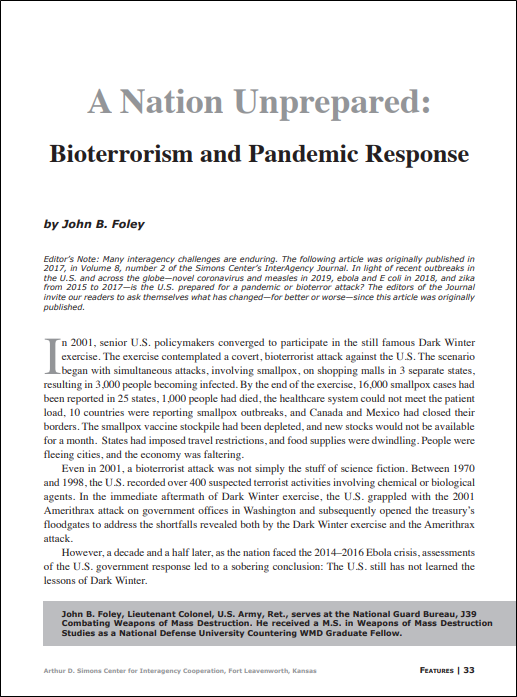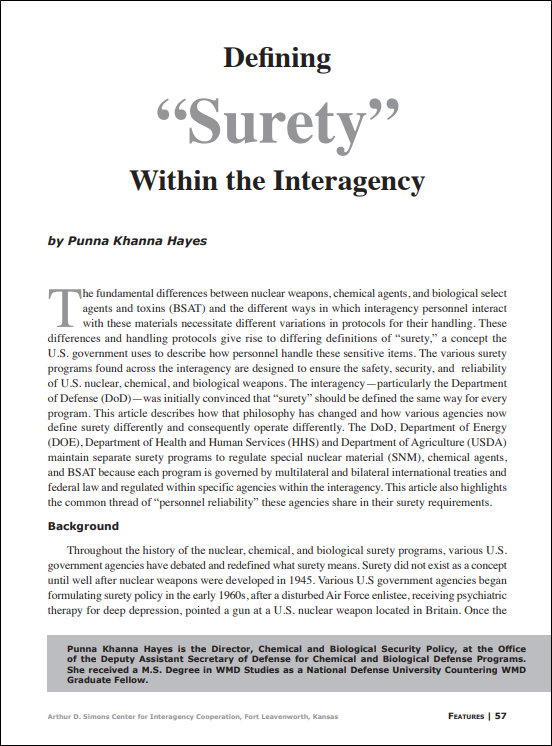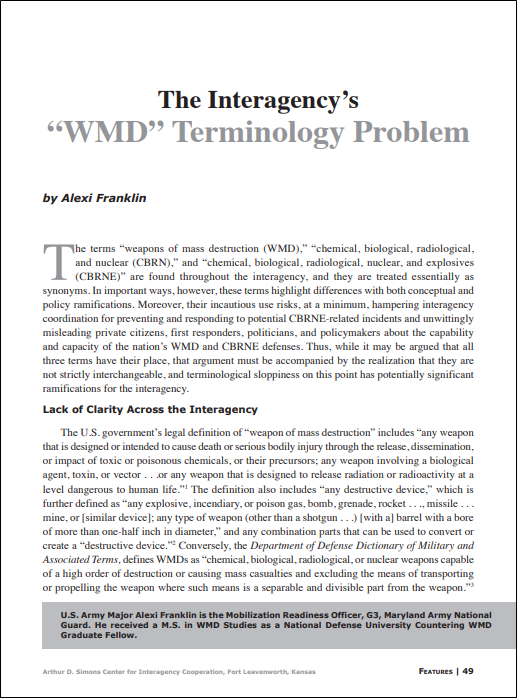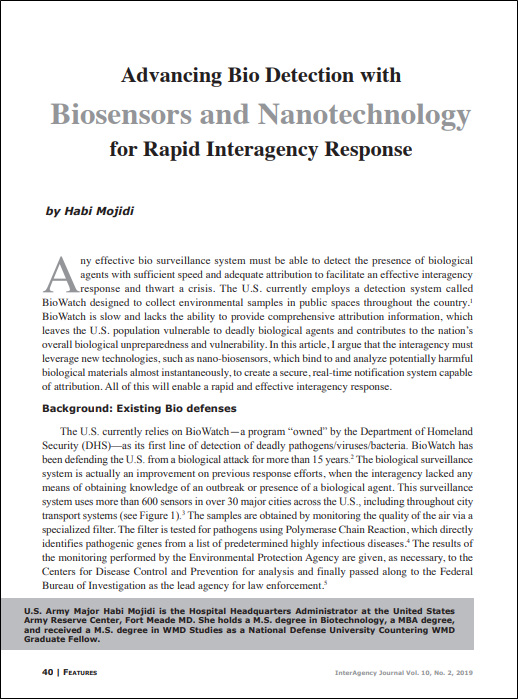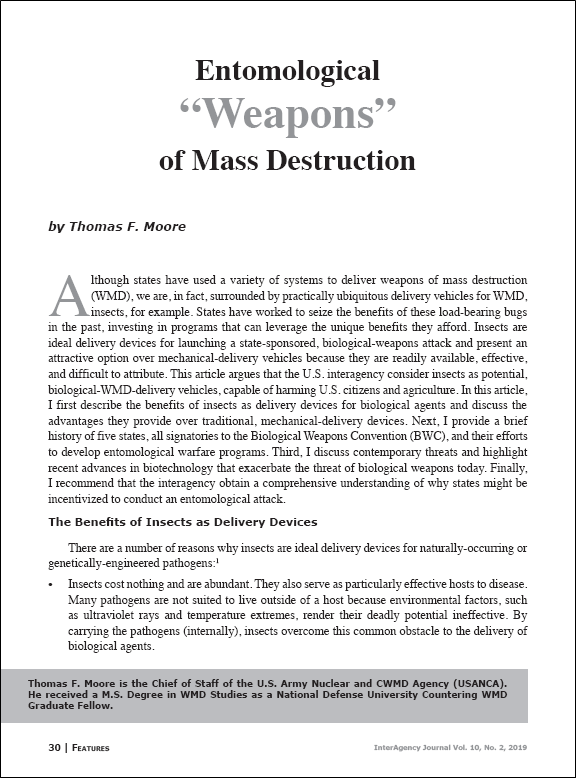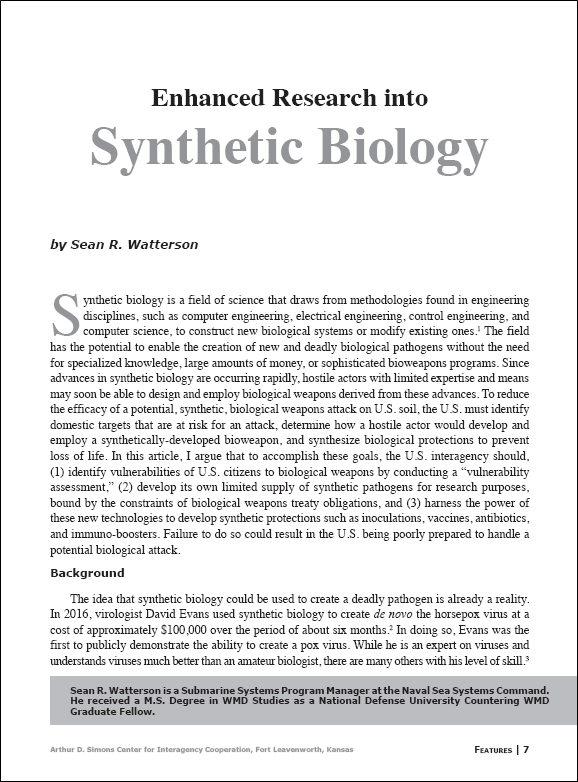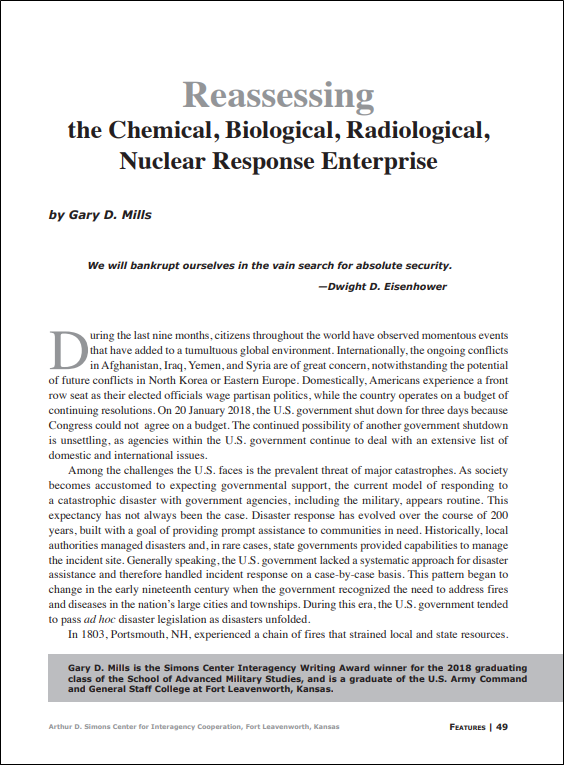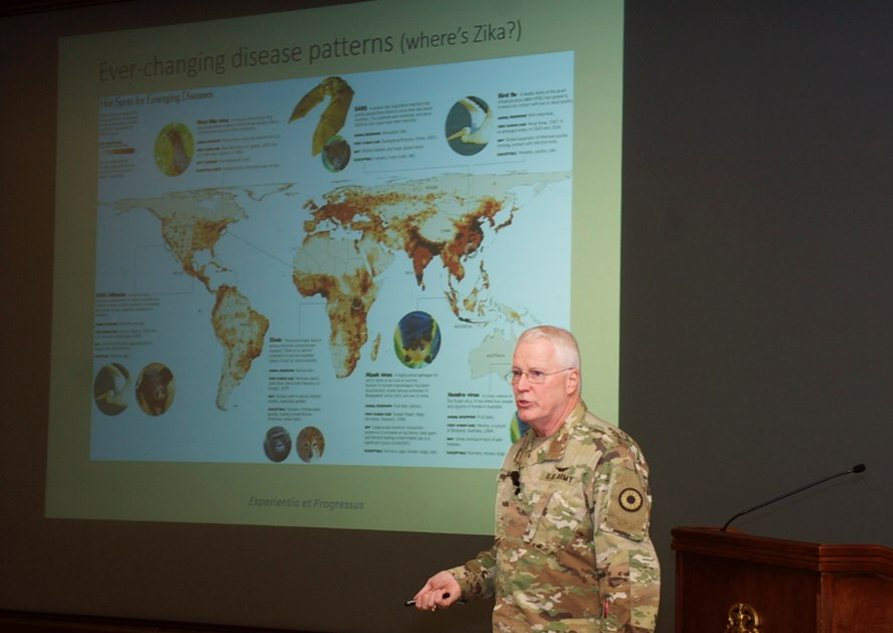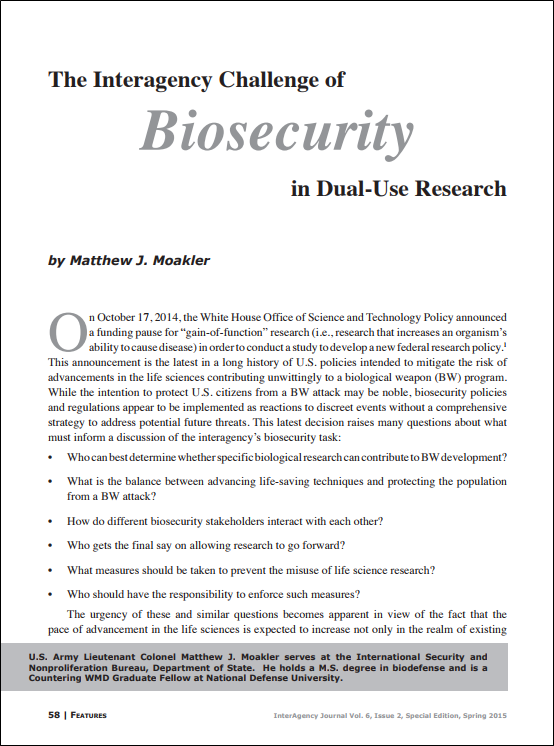Tag: biological
In 2001, senior U.S. policymakers converged to participate in the still famous Dark Winter exercise. The exercise contemplated a covert, bioterrorist attack against the U.S… However, a decade and a half later, as the nation faced the 2014–2016 Ebola crisis, assessments of the U.S. government response led to a sobering conclusion: The U.S. still has not learned the lessons of Dark Winter…
... Read MoreFeatured article: Defining “Surety” Within the Interagency by Punna Khanna Hayes The fundamental differences between nuclear weapons, chemical agents, and biological select agents and toxins (BSAT) and the different ways in which interagency personnel interact with these materials necessitate different variations in protocols for their handling. These differences and handling protocols give rise to differing […]
... Read MoreFeatured article: The Interagency’s “WMD” Terminology Problem by Alexi Franklin The terms “weapons of mass destruction (WMD),” “chemical, biological, radiological, and nuclear (CBRN),” and “chemical, biological, radiological, nuclear, and explosives (CBRNE)” are found throughout the interagency, and they are treated essentially as synonyms. In important ways, however, these terms highlight differences with both conceptual and […]
... Read MoreFeatured article: Advancing Bio Detection with Biosensors and Nanotechnology for Rapid Interagency Response by Habi Mojidi Any effective bio surveillance system must be able to detect the presence of biological agents with sufficient speed and adequate attribution to facilitate an effective interagency response and thwart a crisis. The U.S. currently employs a detection system called […]
... Read MoreFeatured article: Entomological “Weapons” of Mass Destruction by Thomas F. Moore Although states have used a variety of systems to deliver weapons of mass destruction (WMD), we are, in fact, surrounded by practically ubiquitous delivery vehicles for WMD, insects, for example. States have worked to seize the benefits of these load-bearing bugs in the past, […]
... Read MoreFeatured article: Enhanced Research into Synthetic Biology by Sean R. Watterson Synthetic biology is a field of science that draws from methodologies found in engineering disciplines, such as computer engineering, electrical engineering, control engineering, and computer science, to construct new biological systems or modify existing ones. The field has the potential to enable the creation […]
... Read MoreFeatured article: Reassessing the Chemical, Biological, Radiological, Nuclear Response Enterprise by Gary D. Mills We will bankrupt ourselves in the vain search for absolute security. —Dwight D. Eisenhower During the last nine months, citizens throughout the world have observed momentous events that have added to a tumultuous global environment. Internationally, the ongoing conflicts in Afghanistan, […]
... Read MoreRear Admiral R. Timothy Ziemer has left the National Security Council (NSC) and the global health security team he oversaw has been disbanded. Ziemer, described as “one of the most quietly effective leaders in public health,” was the Trump administration’s senior director for global health security and biodefense at the NSC, and he will not be […]
... Read MoreDr. Lee A. Norman, the State Surgeon of Kansas, presented a lecture entitled “Modern Epidemics: Why they occur and why we should worry!” on Monday, April 23 in the Arnold Conference Room in the Lewis and Clark Center on Fort Leavenworth. Dr. Norman spoke about public health issues the world is currently facing, such as […]
... Read MoreFeatured article: The Interagency Challenge of Biosecurity in Dual-Use Research by Matthew J. Moakler On October 17, 2014, the White House Office of Science and Technology Policy announced a funding pause for “gain-of-function” research (i.e., research that increases an organism’s ability to cause disease) in order to conduct a study to develop a new federal research policy. […]
... Read More"*" indicates required fields
